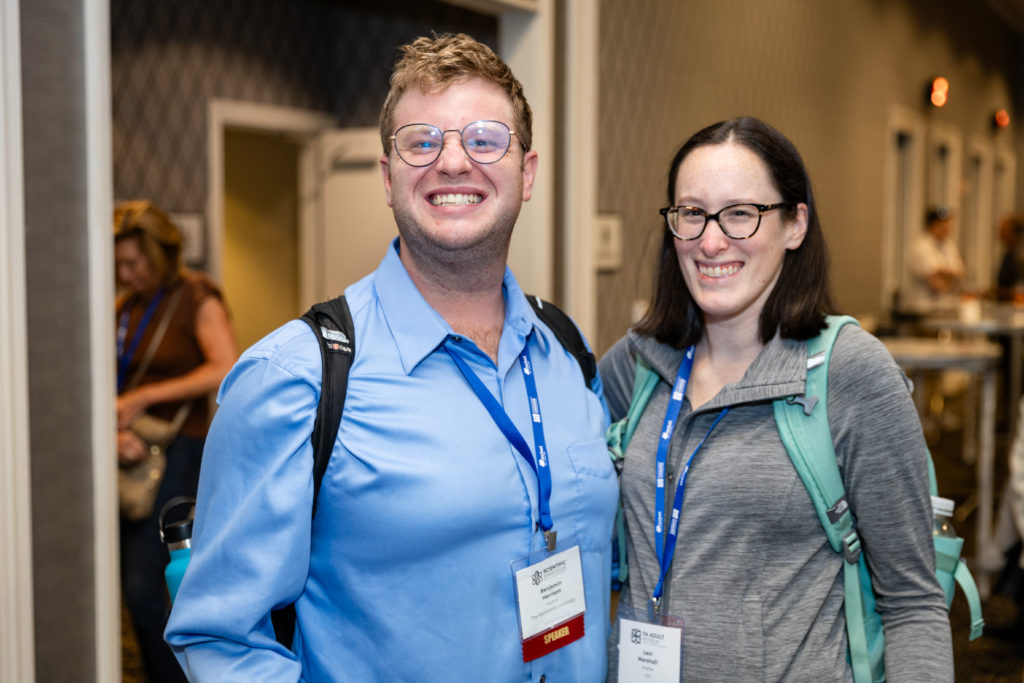Mutations in 23 Fanconi anemia (FA) genes cause defects in DNA repair, which leads to chromosome instability, bone marrow failure, malformations, and susceptibility to cancer. The most well-described role of FA genes in DNA repair is known as the “canonical” or typical role. Much is known about how the FA proteins and the central pathway member, FANCD2, orchestrate DNA repair. When DNA is damaged, it starts a cascade of events that require specific interactions between FA proteins. For example, proteins such as FANCA, FANCG, FANCC, and FANCG, form a complex that is required to monoubiquitinate (or modify) FANCD2 and FANCI. It is this monoubiquitination event that leads to proficient DNA repair. New research has shown, however, that non-canonical (atypical) functions of FA proteins also exist, such as their role in regulating mitochondrial function.
At the 2019 FA Scientific Symposium in Chicago, Ill., investigators shared updates from their current research on the FA pathway and revealed advancements that are reshaping our understanding of the complexity of both canonical and non-canonical functions of the FA genes. These newly identified complexities of the FA pathway demonstrate that understanding how FA proteins function in cells during both DNA repair and other processes may reveal alternative mechanisms to treat and prevent the complications of FA.
Research presented by Dr. Alexandra Sobeck from the University of Minnesota showed a new mechanism of how FANCD2 works during DNA repair. For example, Dr. Sobeck showed, for the first time, that the alpha thalassemia retardation x-linked (ATRX) protein forms a complex with FANCD2 to promote homologous recombination. This means that ATRX is required to work with FANCD2 during certain types of DNA repair, even though it is not an FA gene. Similarly to Dr. Sobeck’s work, Dr. Di Yang from the lab of Dr. Martin Cohen at Oxford, revealed that the new protein, WRNIP1, binds to FANCD2, and is also involved with FANCD2-mediated DNA repair.
Dr. John Tainer from the University of Texas MD Anderson Cancer Center addressed the question of whether specific FA defects could be mitigated by targeting proteins that work upstream (before the FA proteins perform DNA repair functions) during DNA repair. Once such protein, called human exonuclease 5 (EXO5), works to initiate DNA repair prior to the functions of the FANCA core complex. Dr. Tainer’s work showed that blocking EXO5 led to improved DNA repair in the absence of the FANCA protein. FANCA is mutated in approximately 65% of FA patients; therefore, these results mean that inhibiting EXO5 in people with FANCA mutations might be a plausible way to treat complications of FA. Dr. Tainer also highlighted that EXO5 expression correlates with worse cancer prognosis and patient survival for cancers in the general population. Dr. Tainer’s group is interested in developing small molecule drugs to target EXO5.
Research on the non-canonical roles of FA proteins was also discussed at the Symposium. Dr. Elizabeth Sierra Potchanant from Indiana University highlighted her work on the role of FANCC in regulating the cell cycle. Her research showed that FANCC regulated cell division by binding to a protein called cyclin-dependent kinase-1 (CDK1), a master regulator of cell division. Other work has shown that this specific binding domain (place where other proteins can bind) on FANCC is often mutated in cancers in the non-FA population, which highlights the physiological relevance of this interaction.
Dr. Valeria Naim from the University Paris-Sud, Gustave Roussy and Dr. Jessica Luzwick from the University of Texas MD Anderson Cancer Center discussed additional non-canonical roles. Dr. Naim described a new role for FANCD2 that links DNA fragility during replication to mitochondrial function. Mitochondria are organelles found in cells that are responsible for energy production. Dr. Luzwick discussed the knowledge that many FANC proteins localize to the mitochondria, but that their roles were not clearly defined. Research she presented showed that FANCO/RAD51C and other FANC proteins are required for protecting the mitochondrial DNA replication process from oxidative DNA damage (damaged caused by reactive oxygen species produced from normal body processes such as metabolism) thereby preventing inflammation.
Research presented during the FA Pathway session at the 2019 symposium highlights that the FA pathway is highly complex and involves proteins that are not considered FA genes. Knowledge of the mechanisms of how other proteins interact and function in concert with FA proteins could reveal new ways to target the pathway for therapeutic effects. Additional research highlighted at the symposium also revealed non-canonical roles of FA proteins in regulating cellular processes such as cell division and in maintaining mitochondrial function. Future research is needed to develop a deeper understanding of the non-canonical functions of FA proteins.
Glossary for complex terms:
Canonical—typical and well characterized function
Non-canonical—atypical or different from the well characterized function
Monoubiquitination—addition of a ubiquitin protein to another protein to change the function of that protein
Mitochondria—organelle in all cells that regulates energy production
Mitochondrial DNA—DNA that is only located in mitochondria and is different than nuclear DNA
Nuclear DNA—DNA in the nucleus of all cells
Cell cycle—process that occurs in an ordered sequence of events as a cell prepares for cell division
Oxidative damage—damage to cells caused by reactive oxygen species to molecules such as DNA, RNA and proteins
Reactive oxygen species—an oxygen containing molecule that reacts with other molecules in a cell and can cause damage. They are generated constantly by mitochondria.
Protein complex—a group of proteins that bind together to form a larger complex to perform a specific function that can only be done when they are in a complex
Binding domain—a specific part of a protein that is able to bind to another protein.
Upstream—in a cascade of biological events, an event that is upstream of another means that it occurs prior to the other event




